
Growing up with a nature-focused grandmother meant I could have the entire garden in her pantry and the whole forest in her apothecary, from spruce tips salve to Jimsonweed tinctures.
Even though we lived in a communist apartment building, with straight lines and gray walls, all I could see around me was green.
And the most wonderful memories I have are those of us roaming the hills around our small province town, looking for herbs to make some new, smelly concoction of hers.
However, there were always two remedies she used to make each late spring, that I would not only enjoy but love, so she always kept them hidden: spruce syrup (or pine tree syrup) and plantain syrup.
And today I’ll speak about the first, which I got around to making last weekend.
But before you get the tasty recipe (it’s not magic or anything), there are a few other things you should know about spruce tips.
What Are Spruce Tips?
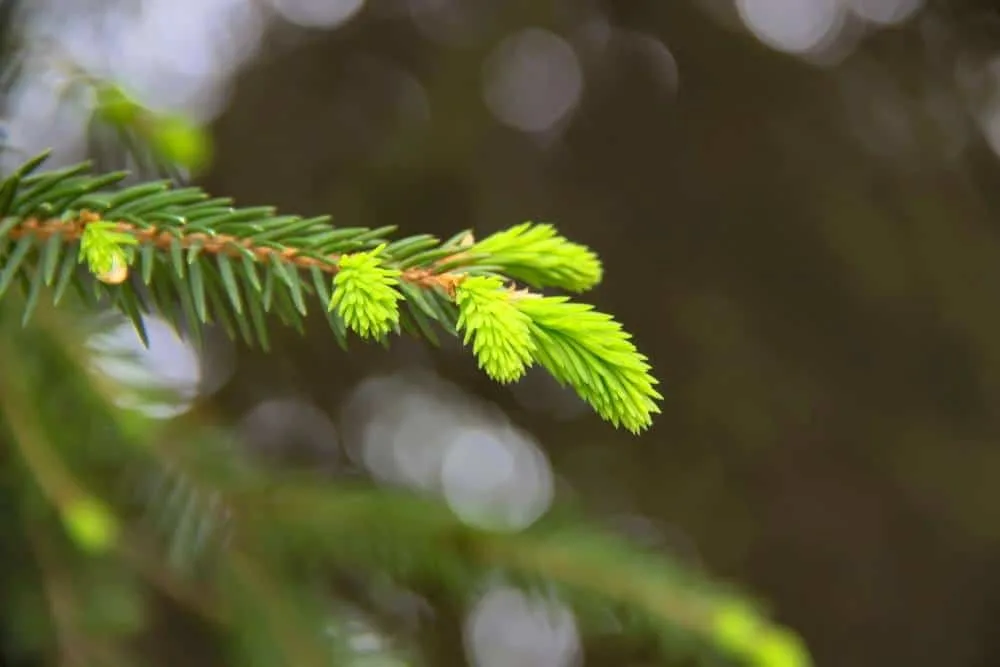
Spruce tips or spruce buds, whatever you might call them, are the light green tips of spruce branches you see every spring. The ones that seem to brighten up every pine forest.
What Are The Health Benefits of Spruce Tips?
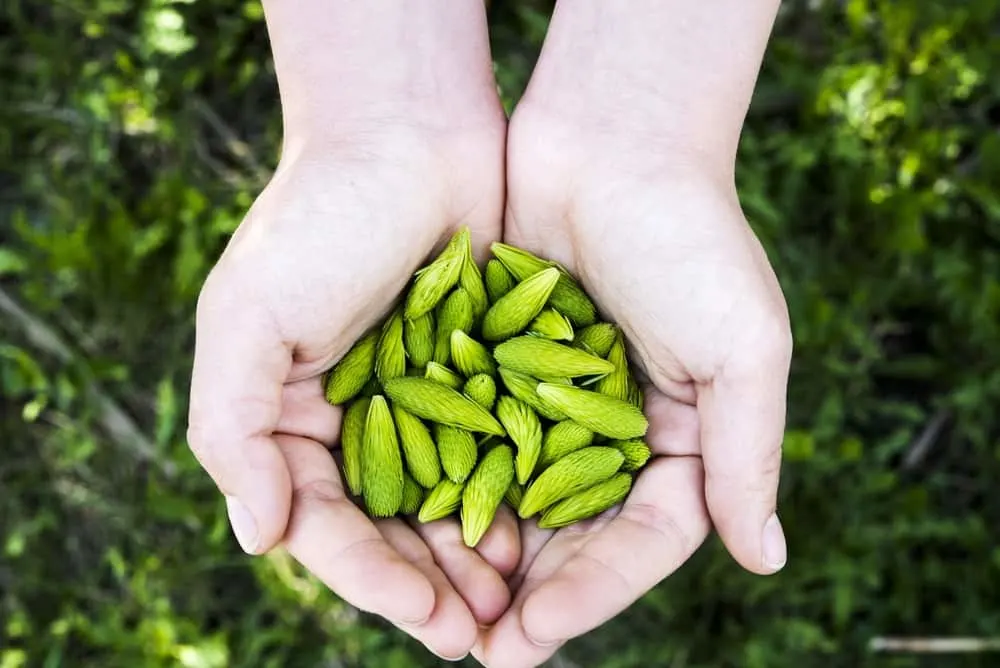
If you’ll taste them, you’ll know instantly. Spruce tips are full of vitamin C. The best part about them is that they maintain these high levels even if you freeze or dry them.
So adding them to your favorite winter tea will not only bring a spring flavor but also reward your body with this powerful antioxidant.
Spruce tips are filled with carotenoids. Carotenoids have the ability to decrease the risk of developing certain conditions. The most common ones revolve around the eyes’ health and tumoral masses.
Spruce tips contain magnesium and potassium. Both minerals will help you feel more energized, enabling the liver’s metabolic processes.
Used in Europe for centuries, spruce needles, tips, and buds have been used by Amerindians as well to relieve sore throat and cough symptoms.
The most important element contained by spruce is chlorophyll. It helps transport oxygen (making it a good remedy for respiratory issues), neutralizes free radicals, controls cravings, maintains a balanced blood sugar level and enables a faster tissue healing process.
How To Make Spruce Tips Syrup
No matter how much you look online, you’ll find that all spruce tips syrup recipes have one thing in common: SUGAR
So, if you are trying to avoid it or looking for replacements, there’s a slight chance you will not be able to do so. I tried using pectin and honey and I’ll get to that later.
So, to get our hands dirty, you first have to take a hike.
It’s recommended to pick spruce trees located at least 100 yards from any roadway. If you can go further and maybe at least 15 miles from any city or industrial area, it’s even better.
Prep time: 5 minutes
Cook time: 1h + 2-3h
Total time: 3-4h
Yields: ~3 liters
Ingredients:
- 1kg of spruce tips (the smaller, the better)
- 4 liters of water
- 2-3 kg of sugar
Instructions:
Thoroughly wash and drain the spruce tips.
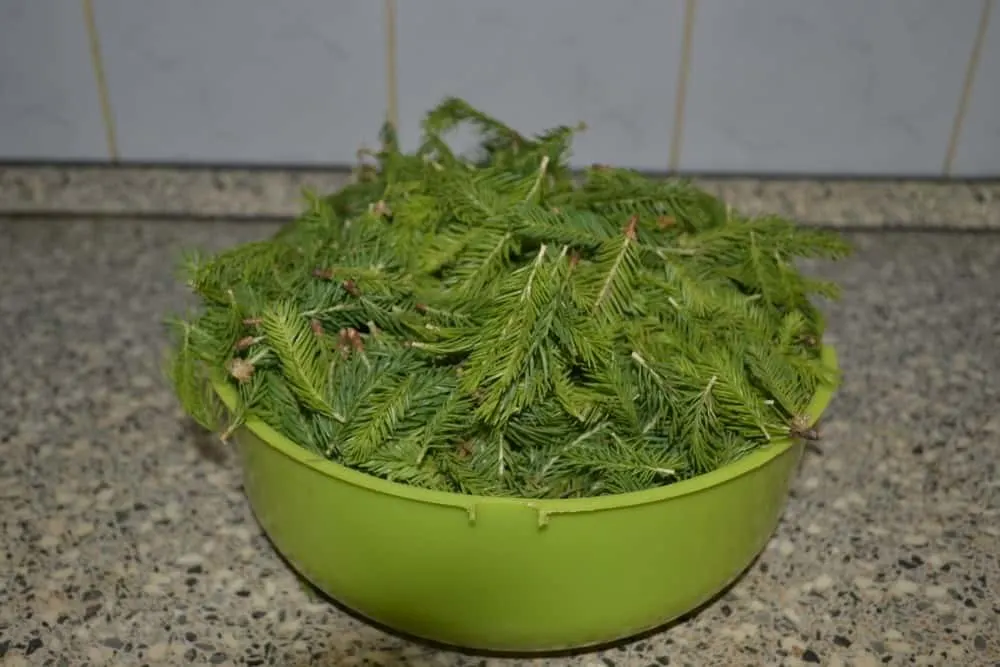
Place them in a tall pot and pour the water over them. Even though they float, when you gently press on them, the water should cover them by 2 inches.
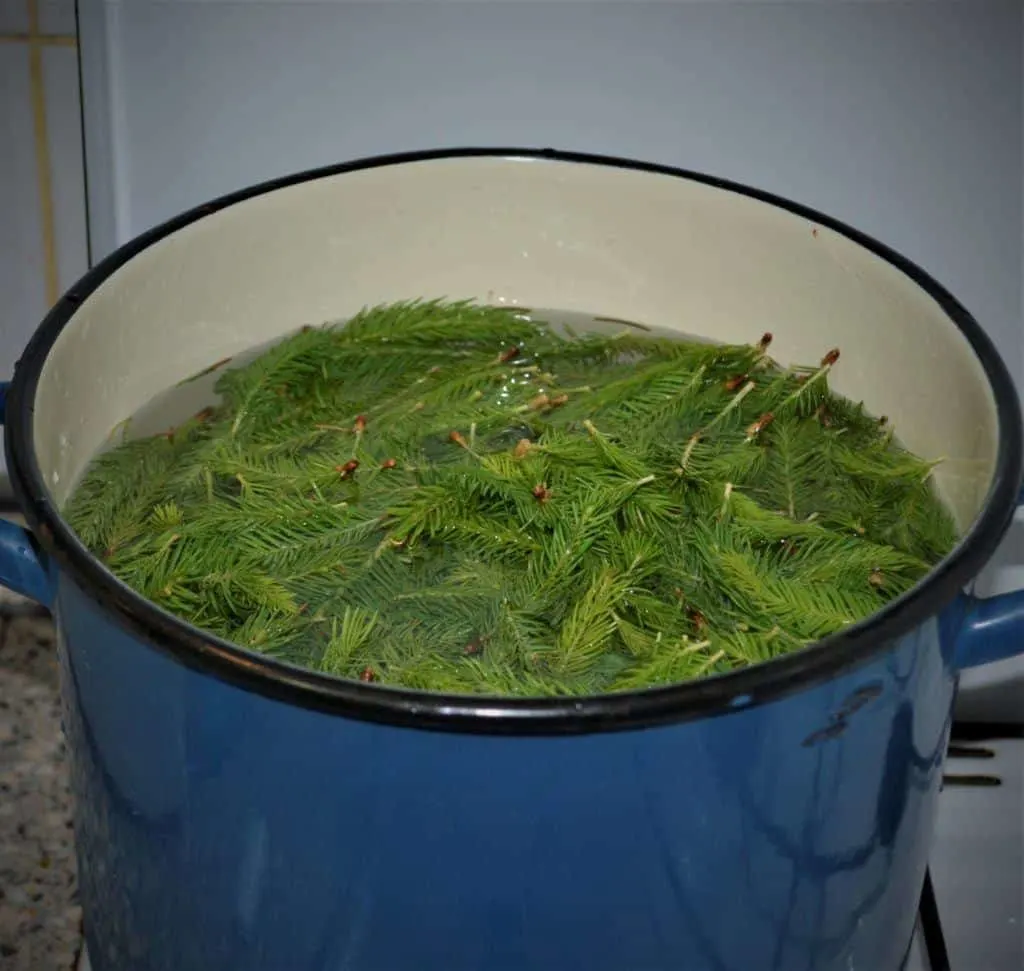
Bring the spruce tips to a boil without cover. Once the water has started boiling, let it go on for one hour, with a lid on. The spruce tips should turn to a light brown color.
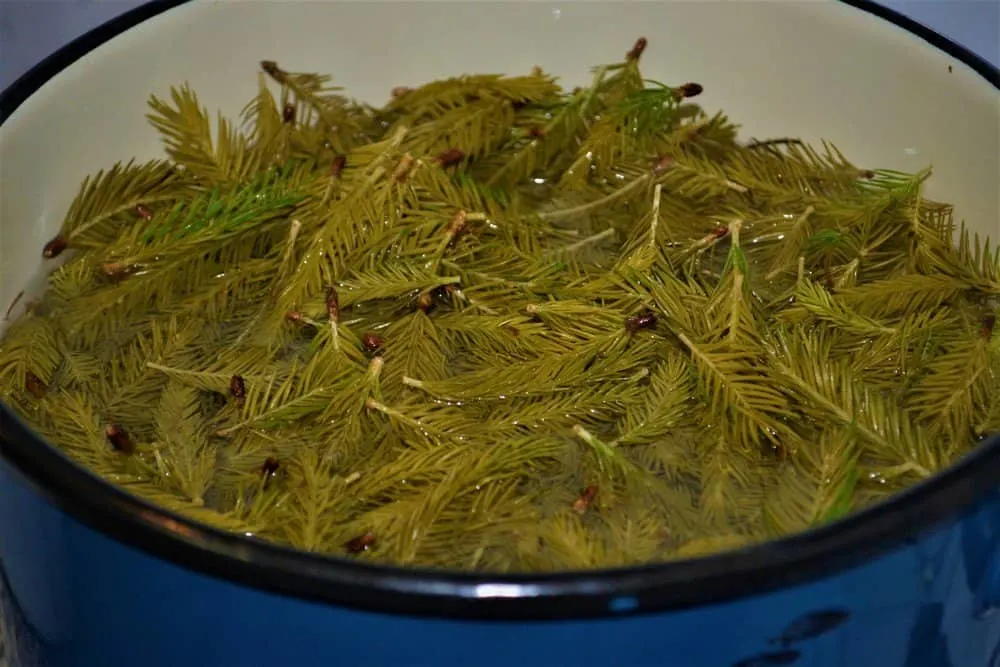
After you turn off your stove, let them cool for 24 hours with a dry, clean cloth on top.
Drain the spruce tip water and use the cloth to strain every single ounce of goodness from those spruce tips.
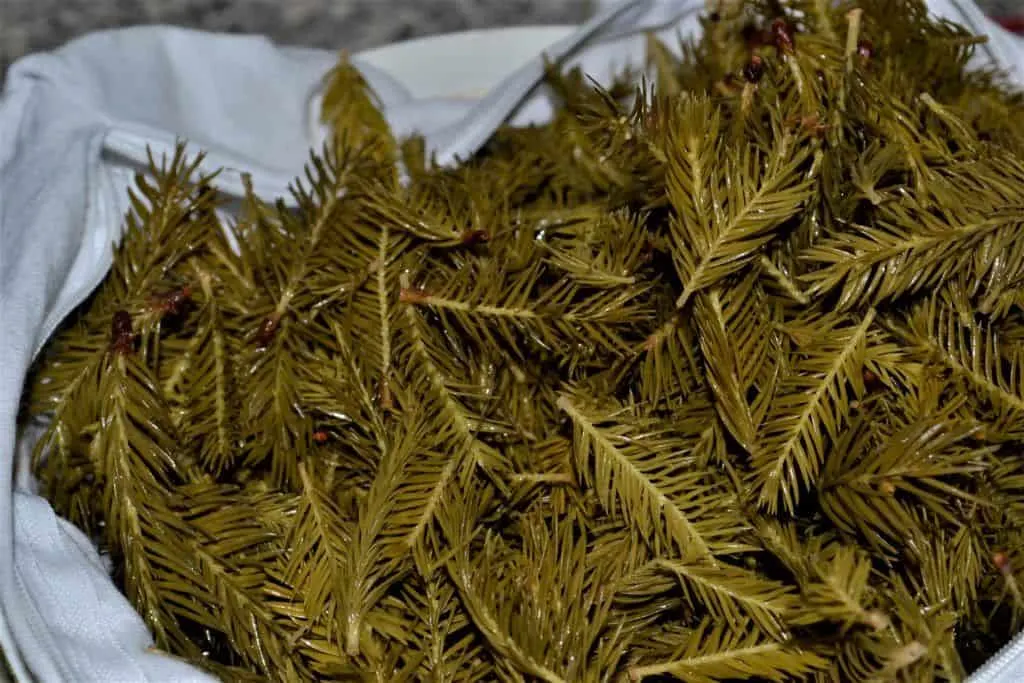
Now it’s time to add the sugar. Measure the water first, as it is an important step. For every liter of water, you add 1kg of sugar.
If you used the quantities above, you should be left with around 3.5 liters of spruce tips water. At least, that is how much I was left with. And I only added 3kg of sugar.
I gently mixed it in, brought it to a boil and then turned the stove to the minimum, with the lid off. The excess water will evaporate in 2-3 hours.
Checking it and stirring every 30 minutes is recommended but not mandatory.
To verify if it’s done, you’ll first look at the color.
You want to see the enchanting amber color that maple syrup has. If you want to taste it, put a few drops on a glass/porcelain plate and check it’s consistency. It should slide, but not pour.
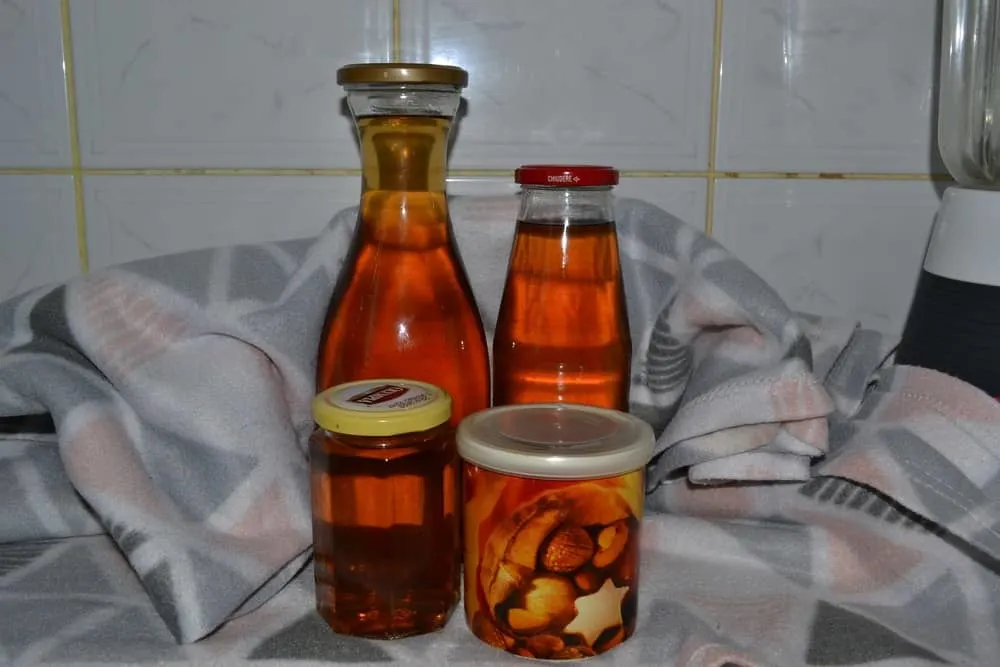
Once it is done, all you need to do is place it in bottles or jars and seal them.
Tuck them in a warm blanket and let them cool overnight. The next morning, check the lids, to make sure they have sealed. They should not pop!
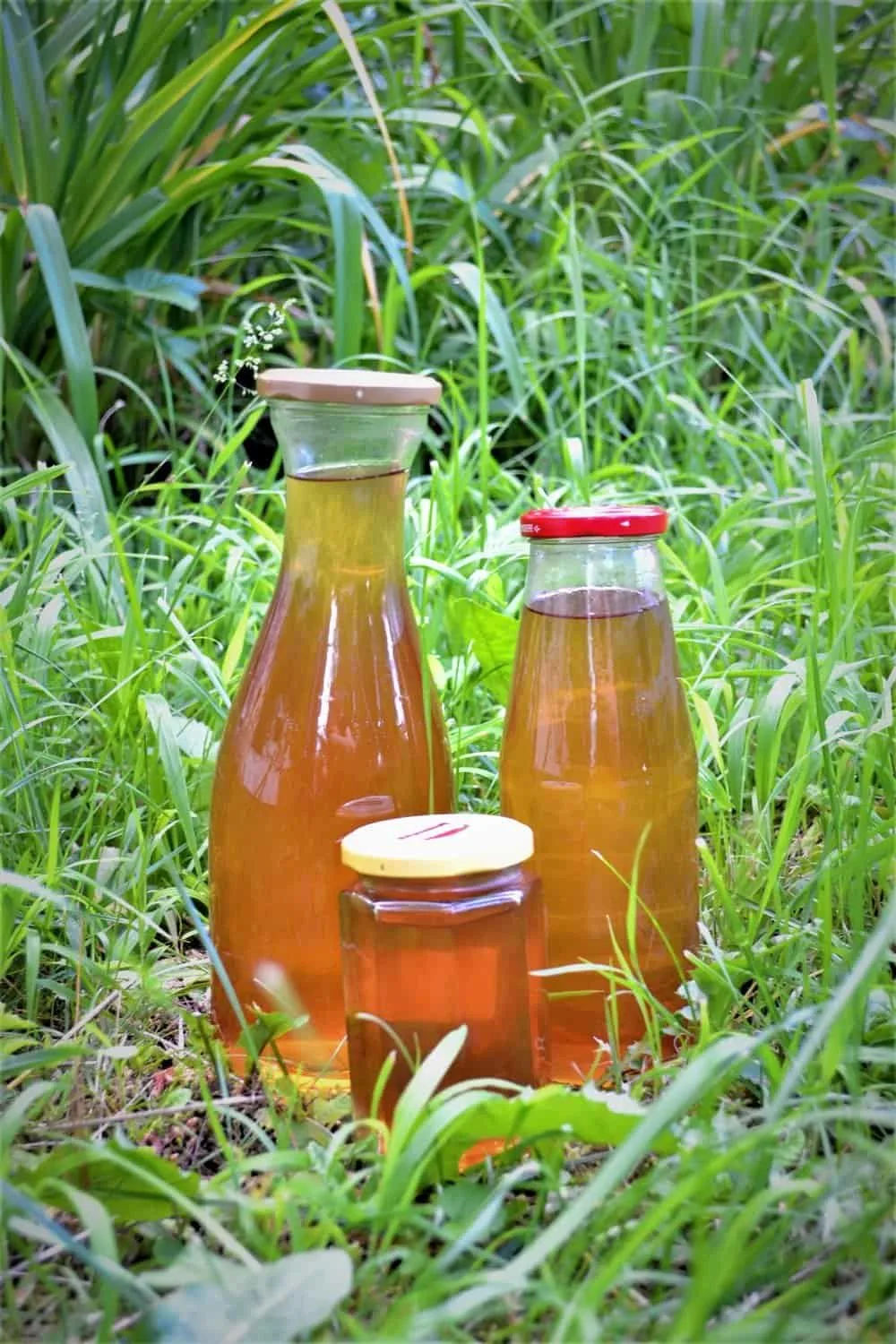
And if they do, you’re in luck, you get to use that bottle early!
How To Make Spruce Tips Tea
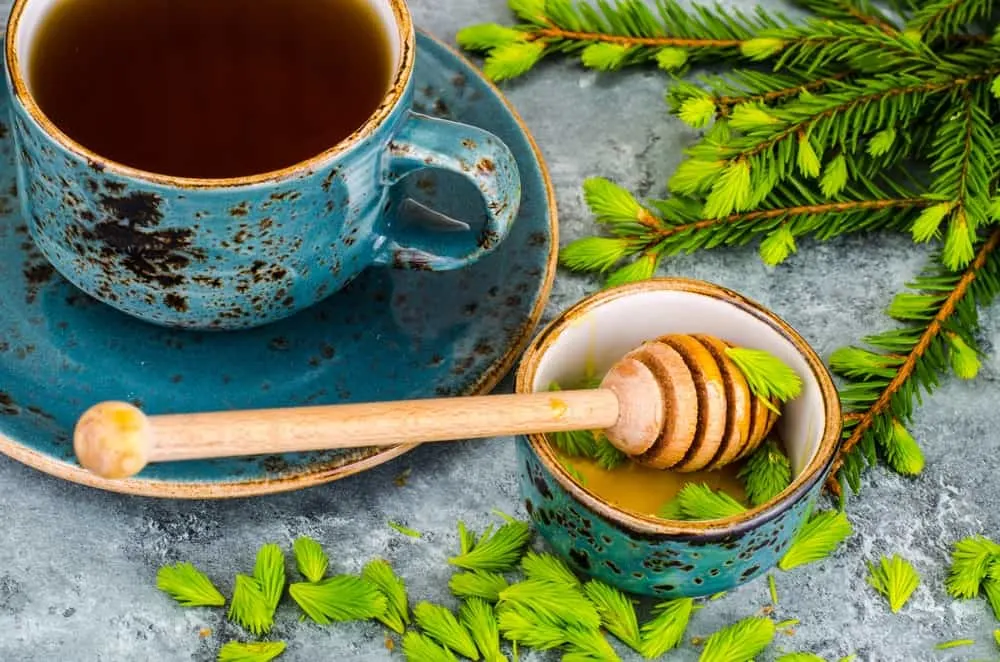
Honestly, spruce tips are good for more than just making syrup.
Tips, cones, needles have been used for centuries to make tea. Refreshing and full of vitamin C, spruce tips tea has the ability to energize and comfort at the same time.
Prep Time: 5 minutes
Cook Time: 5 minutes
Total Time: 10 minutes
Yields: 1 serving
Author: Andrea Wyckoff
Ingredients:
- 4-6 1inch (max) spruce tips
- 1 ½ cups of hot water
- 1 cinnamon stick
- Sweetener of choice
Instructions:
- Collect young spruce tips.
- Add them and the cinnamon stick to a cup. Pour hot water.
- Let the infusion sit for a few minutes. Strain
- Add sweetener of choice (if needed) and enjoy!
More Spruce Tips Uses
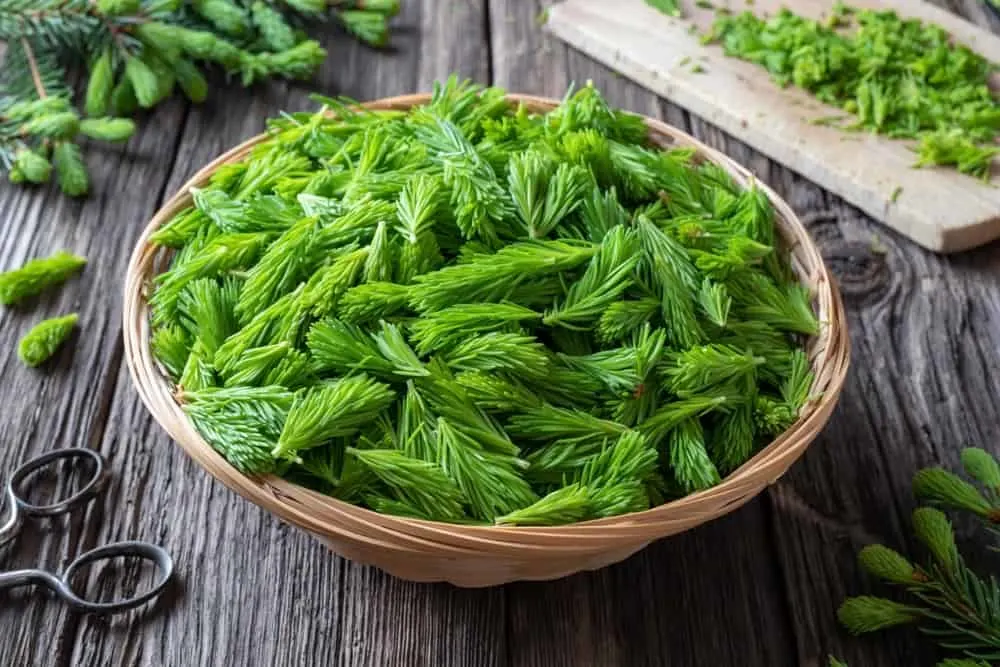
Spruce tips come with a great advantage: versatility.
As we all love the refreshing sensation of mint, we also love the smell of pine/spruce trees. Bringing it in our homes is highly recommended.
Here are some more brilliant ways to use spruce tips.
Eat them as they are – Rich in vitamin C, spruce tips are a tasty and refreshing snack.
Add them to salads (or even better, to hummus – you will love it)
Spruce tips soap (Replace any herbs with spruce tips or use some of the water aromatized water resulted from making the spruce tips syrup as a base for your soap)
Dry and store to use during winter
Spruce tips ice-cream – it doesn’t matter how surprised you might be, this is delicious and you can get an amazing recipe here.
Spruce beer – this brilliant homebrew would make a great seasonal beverage.

Get the famous Rural Sprout newsletter delivered to your inbox.
Including Sunday musings from our editor, Tracey, as well as “What’s Up Wednesday” our roundup of what’s in season and new article updates and alerts.

